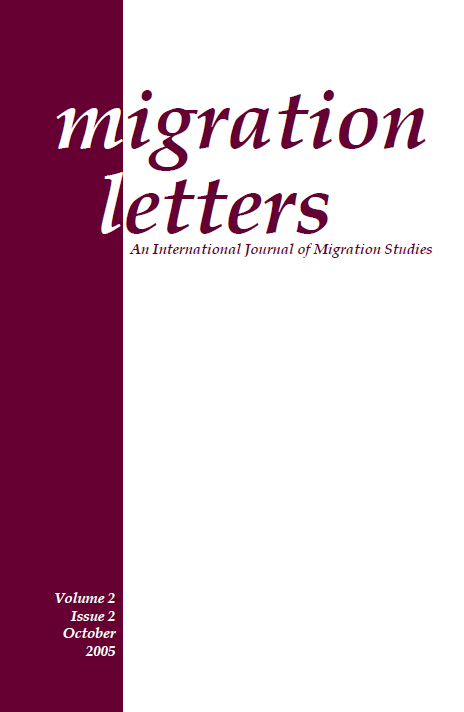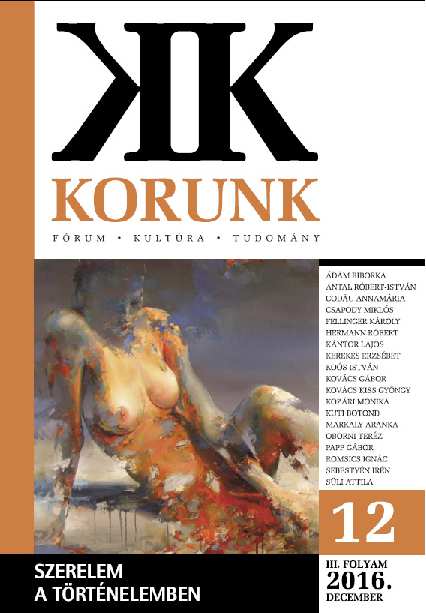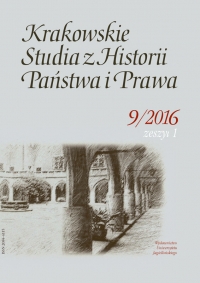
A valóságos és a virtuális zsidó Kárpátalja
Zsidók Kárpátalján. Történelem és örökség a dualizmus korától napjainkig. Szerkesztette: Bányai Viktória –Fedinec Csilla –Komoróczy Szonja Ráhel. Budapest, Aposztróf Kiadó, 2013. 455 oldal.
More...We kindly inform you that, as long as the subject affiliation of our 300.000+ articles is in progress, you might get unsufficient or no results on your third level or second level search. In this case, please broaden your search criteria.

Zsidók Kárpátalján. Történelem és örökség a dualizmus korától napjainkig. Szerkesztette: Bányai Viktória –Fedinec Csilla –Komoróczy Szonja Ráhel. Budapest, Aposztróf Kiadó, 2013. 455 oldal.
More...
Krasznai Zoltán: Földrajztudomány, oktatás és propaganda. A nemzeti terület reprezentációja a két világháború közötti Magyarországon. Pécs, Publikon kiadó, 2012. 262 oldal.
More...
This article examines how the rise of the Kurdistan Regional Government (KRG), the on-going Kurdistan Workers’ Party (PKK) insurgency and current peace negotiations with the Turkish government, and the recently declared autonomy by the Syrian Kurds—largely under the leadership of the Democratic Union Party (PYD)—have empowered the Kurds and challenged the existing political map of the Middle East largely established after World War I. At the same time this article also considers the rise of the Islamic State in Iraq and Syria (ISIS) as one of the other main tipping points changing the Middle East political map. The roles and policies of Turkey and the United States to these transformations are also analysed.
More...
Drawing upon a collection of oral history interviews, this paper offers an insight into entrepreneurial and residential patterns and behaviour amongst Turkish Muslims in the German city of Bremen. The academic literature has traditionally argued that Turkish migrants in Germany have been pushed into self-employment, low-quality housing and segregated neighbourhoods as a result of discrimination, and poor employment and housing opportunities. Yet the interviews reveal the extent to which Bremen’s Turkish Muslims’ performances and experiences have overwhelmingly been the consequences of personal choices and ambitions. For many of the city’s Turkish Muslim entrepreneurs, self-employment had been a long-term objective, and they have succeeded in establishing and running their businesses in the manner they choose with regards to location and clientele, for example. Similarly, interviewees stressed the way in which they were able to shape their housing experiences by opting which districts of the city to live in and by purchasing property. On the whole, they perceive their entrepreneurial and residential practices as both consequences and mediums of success, integration and a loyalty to the city of Bremen. The findings are contextualised within the wider debate regarding the long-term legacy of Germany’s post-war guest-worker system and its position as a “country of immigration”.
More...
This paper focuses on the interconnection between internal migration in Greece, integration and voluntary return prospects of Albanians currently living in Epirus and the Ionian Islands. It is based on field research conducted during 2008 among immigrants who live in Ioannina, Preveza, Arta and Kerkyra. The study highlights the different types of internal trajectories that migrants had follow before settling in the neighbouring areas of Greece, just a few kilometres away from their homeland. Migrant’s current economic integration and some of the socio-economic barriers they face are discussed and linked to their will to return permanently to Albania. Internal mobility is found to be a preceding step in search for integration; integration, in turn, acts as a counterbalance to both further internal movement and voluntary return pro-spects, at least for the next foreseeable years.
More...
The experience of migrants living in 15 European countries was examined across major life domains: Subjective wellbeing, physical, financial, career, social, religion, community, and national institutions. Evaluative and experiential wellbeing ratings are lower among migrants, as well as social connections and attachment to their local community. Financial wellbeing is lowest among newcomers; however, migrants still do not reach the level of the native born after five years in their new country. Migrants are more likely than native born residents to express entrepreneurial spirit and to have confidence in national institutions of their new country.
More...
First-second generation undocumented minors to the US are considered through an experiential-style “letter” in which the author uses his personal narrative as a backdrop for the deportation dilemma. The two primary questions considered in this piece are, can compassion play a role in policy decisions regarding deportation, and what happens when a person develops social citizenship within the host nation and then experiences deportation as a result of a fairly rigid world system? The focus is on the individual costs of forced migration when the promises of a new world order lead to alienation for the peoples of the Global South.
More...
There is considerable public debate over the degree of residential segregation of members of ethnic minority groups in British urban areas. Some claim that this is increasing, others that with economic and social assimilation members of those minority groups are increasingly moving away from the areas of initial concentration. The implication is that the more assimilated are also the least segregated. To test whether this is the case, data from the 2001 British census are used to explore whether those who claim a mixed or dual ethnic identity – and who are assumed to be more assimilated than those who identify with one of the minority groups only – are less segregated residentially. The evidence overwhelmingly sustains that argument that they are.
More...
A study of migration patterns among residents of an urban Bolivian neighbourhood sheds light on how households access resources, and the impact of ethnic identity markers on their ability to do so. The study shows how, in an ethnically divided society, households of rural, indigenous Andean background use migration as part of a complex range of strategies to access resources through space and across social and ethnic divides. The study demonstrates the limitations that these migrant households face, and their implications for social and economic development in Bolivia.
More...
In last two decades Russia and especially its capital Moscow has become one of the leaders of the global migration processes. Many jobs in the consumer services are occupied by recent immigrants. Ethnic Russians remain the predominant group, forming almost 91.6 per cent of the permanent population, but when measured numerically, other ethnic groups number more than 2 million people in the city. Ethnically non-Russian population has increased significantly. More and more people with different cultural backgrounds are becoming new Moscow inhabitants. Paper represents a study of the demographic and cultural processes that are taking place in the city of Moscow and in the Province of the same name during the last two decades. The author speaks about the influence and introduction of new folk cultures and traditions into Moscow community. The paper also pays attention to the process of social and cultural migrants’ integration from the point of view of major Moscow indigenous population. The problems related to development of cultures are resolved in different ways. A quite new phenomenon for Russia is an association of the particular ethnic group members in ethnic-cultural organizations striving for the development and propagation of cultural and religious traditions of their people. Young people are being actively involved in this process attending special non-Russian language schools. The Moscow City Government runs a goaloriented policy in support of development of different cultures.
More...
Kurdish Studies has no intention to regularly cover and comment on recent events. However, we are definitely interested in publishing studies, based on serious research and critical reflection, that provide important background or new insights relevant to understanding these events. We would specifically encourage colleagues who could contribute to deepening our understanding of the developments in Syria (or, for that matter, developments affecting the Kurds of Iran, who rarely if ever hit the headlines and who are the most seriously under-studied part of Kurdish society). This special issue of Kurdish Studies is dedicated to studies of the Kurdish language, the oldest branch of Kurdish studies, and the first to find a degree of academic institutionalisation. Compared to other major Middle Eastern languages, Kurdish has received relatively little serious investigation, but there is a gradually growing corpus of empirical and theoretical research, of which the guest editors give a useful overview in the introduction.
More...
Adem Uzun, “Living Freedom”: The Evolution of the Kurdish Conflict in Turkey and the Efforts to Resolve it. Berghof Transitions Series No. 11. Berlin: Berghof Foundation, 2014. 48 pp., (ISBN: 978-3-941514-16-4). Ebru Sönmez, Idris-i Bidlisi: Ottoman Kurdistan and Islamic Legitimacy, Libra Kitap, Istanbul, 2012, 190 pp., (ISBN: 978-605-4326-56-3). Sabri Ateş, The Ottoman–Iranian Borderlands: Making a Boundary, 1843-1914, New York; Cambridge University Press, 2013. 366., (ISBN: 978-1107033658). Choman Hardi, Gendered Experiences of Genocide: Anfal Survivors in Kurdistan-Iraq. Farnham, Surrey and Burlington Vermont: Ashgate, 2011, xii + 217 pp., (ISBN: 978-0-7546-7715-4). Harriet Allsopp, The Kurds of Syria: Political Parties and Identity in the Middle East, London and New York, I.B. Tauris, 2014, 299 pp., (ISBN: 978-1780765631). Khanna Omarkhali (ed.), Religious Minorities in Kurdistan: Beyond the Mainstream [Studies in Oriental Religions, Volume 68], Wiesbaden: Harrassowitz, 2014, xxxviii + 423 pp., (ISBN: 978-3-447-10125-7). Anna Grabole-Çeliker, Kurdish Life in Contemporary Turkey: Migration, Gender and Ethnic Identity, London: I.B. Taurus, 2013, 299 pp., (ISBN: 978-1780760926).
More...
Almost a century ago, Memduh Selim wrote in the Kurdish magazine Jîn, which appeared in Istanbul, about the importance of festivals and commemorations for national awareness, and he urged the Kurds to follow the example of other nations and cultivate their national days. The mobilising potential of such celebrations and the various symbols associated with them has been amply proven in the case of the Kurds. As the major festivals to be celebrated, Memduh Bey mentioned Kurdish New Year (sersal) and the day of Kawa the Blacksmith, the hero who slew the tyrannical king Zahhak. He believed that the latter day was to be celebrated towards the end of summer. Later generations joined the symbol of Kawa’s uprising to the spring festival, making Newroz/Nowruz a festival of rebirth, resistance and liberation. Although other Iranian and Turkic peoples also celebrate Nowruz, the day has acquired a distinct symbolic meaning for the Kurds. The festival and the myth associated with it are shared by Kurds of all countries; it has become a core aspect of Kurdish identity as well as a symbol of the Kurdish struggle against oppression.
More...
This is an obituary for Professor Ol’ga Ivanovna Zhigalina, the well-known Russian Kurdologist and Iranist and director of the Kurdish Cabinet at the Institute of Oriental Studies of the Russian Academy of Science (Institút vostokovédenija Rossíjskoj akadémii naúk) in Moscow, who sadly passed away at her place of work on 23rd October, 2013. Over four decades Professor Zhigalina made an immense contribution to the field of Kurdology and the modern history of the Kurds, and her work continues to resonate in this field.
More...
Cengiz Gunes and Welat Zeydanlıoğlu (eds.), The Kurdish Question in Turkey: New Perspectives on Violence, Representation and Reconciliation, London: Routledge, 2014, 288 pp., (ISBN: 978-0-415-83015-7). Almas Heshmati and Nabaz T. Khayyat, Socio-Economic Impacts of Landmines in Southern Kurdistan, Newcastle upon Tyne: Cambridge Scholars Publishing, 2013, 341 pp., (ISBN: 978-1-4438-4198-6). Estelle Amy de la Bretèque, Paroles Mélodisées: Récits épiques et lamentations chez les Yézidis d’Arménie (Melodised speech. Heroic songs and laments among the Yezidis of Armenia), Paris: Classiques Garnier, 2013, 230pp., (ISBN: 978-2-8124-0787-1). Diane E. King, Kurdistan on the Global Stage: Kinship, Land, and Community in Iraq, New Brunswick and London: Rutgers University Press, 2014. 286 pp., (ISBN: 9780813563534). Michael M. Gunter and Mohammed M.A. Ahmed (eds.), The Kurdish Spring: Geopolitical Changes and the Kurds, Costa Mesa: Mazda Publishers, 2013, 344 pp., (ISBN: 978-1568592725). Derya Bayır, Minorities and Nationalism in Turkish Law, Surrey: Ashgate Publishing House, 2013, 314 pp., (ISBN: 9781409420071).
More...
Uğur Ümit Üngör, The Making of Modern Turkey: Nation and State in Eastern Anatolia, 1913-1950, Oxford: Oxford University Press, 2011, 352 pp. (ISBN: 9780199603602). Mohammed M. A. Ahmed, Iraqi Kurds and Nation-Building. New York: Palgrave Macmillan, 2012, 294 pp., (ISBN: 978-1-137-03407-6), (paper). Ofra Bengio, The Kurds of Iraq: Building a State within a State. Boulder, CO and London, UK: Lynne Rienner Publishers, 2012, xiv + 346 pp., (ISBN 978-1-58826-836-5), (hardcover). Cengiz Gunes, The Kurdish National Movement in Turkey, from Protest to Resistance, London: Routledge, 2012, 256 pp., (ISBN: 978-0-415—68047-9). Aygen, Gülşat, Kurmanjî Kurdish. Languages of the World/Materials 468, München: Lincom Europa, 2007, 92 pp., (ISBN: 9783895860706), (paper). Barzoo Eliassi, Contesting Kurdish Identities in Sweden: Quest for Belonging among Middle Eastern Youth, Oxford: New York: Palgrave Macmillan, 2013, 234 pp. (ISBN: 9781137282071).
More...
In this study we used the anthropological method of participant observation in order to document, analyse and interpret the most important Romanian commemorative event of our times, the 1st of December. More concretely, we analysed in depth the example of the event of 2014, held in Sfântu Gheorghe. Due to its geographic situation and historic evolution, the city of Sfântu Gheorghe and its surroundings provide a very special geographical site for this research, in respect of ethnicity and minority-majority relations; hence, this study focuses on a territory which represents a frontier zone in respect of both ethnic and confessional point of view. The detailed analysis of the narratives, discourses, system of symbols and codes of the event of 2014 demonstrates that the local Romanian community has been celebrating this commemorative day with an even growing mediatisation. The elite that organises the event uses the majestic atmosphere of the feast to organize marches and to demonstrate its power and institutions, to model the conceptual aspect of the community and to consolidate its identity. As regarding the means and methods, it does not refrain from instigating interethnic tensions, a quarrel of symbols and other elements – as it is reflected in the scandals regarding plaques, anthems, flags, the appearance of the New Right – all organised around this feast.
More...
The authors of this article focus on the definition of the term “nation”. They introduce various definitions of “nation” offered by European thinkers, including Czechs. They point out that in the ideas of linguists, historians, and politicians of the Revival and post-Revival periods were picked up by Czech sociologists, philosophers, and political scientists of the 20th century. The authors also introduce several individual schools of thought that attempted to study the term “nation”.
More...
The article presents an interpretation of the process of mythologizing the Roma by placing them in the role of a ‘significant Other’ in the European modernity. In this process, the real Roma have been substituted by the phantasm of a ‘Gypsy’ which condenses anxieties and repressed desires of modern individuals. The author’s intention is to deconstruct the question of why the Roma keep silence regarding their history, which tacitly—and wrongly—assumes that silence equals forgetting. This question is in the course of the argument substituted with a different one, namely, of why, until very recently, the Roma have been perceived as a people without history, living in an eternal present and disregarding both the past and the future. To provide the answer, the author refers to the Lacanian terminology as employed in the Critical Theory and presents the idea of non-historical ‘Gypsies’ as a phantasm of the split modern subject that constructs ‘Gypsies’ on the one hand as a barbarian obstacle to the process of modernization and, on the other hand, as those whose ‘undeserved pleasure’ is a projection of the repressed dreams of modernity. Next, it is argued that genealogy of memory as studied within memory studies, that is the process that leads from individual memories, through social memory, to collective one and the other way around, is based on the same logic as the genealogy of modern subject and involves coercive mechanisms such as differential deprivation of history, silencing, muting, and erasing of the memories that do not fit the institutionally legitimized vision of history. The Roma are therefore presented here not as silent about their history but as forcibly muted, and the marginalization of their memory as part of their social exclusion. In conclusion, it is argued that the phantasm of a ‘Gypsy’ served as an ideological rationalization of the genocide of the Roma during the Second World War and thus that there is a close affinity between the genealogy of modern subject, the silencing of memory, and the crime of genocide.
More...
Monolingual Mandarin Chinese policy was adopted during ROC’s occupation of Taiwan since 1945. Taiwanese people were forced to learn Mandarin Chinese and to identify themselves as Chinese through the national education system. In response to ROC’s Chinese language policy, the promoters of Taiwanese have protested against the monolingual policy and have demanded vernacular education in schools. This is the so-called ‘Tâi-bûn Ūn-tōng’ or ‘Taiwanese language movement’ that has substantially grown since the second half of the 1980s. The purpose of this paper examines the relationship among politics, nationalism and ethnolinguistic development in the case of Taiwan from the 1940s to current date.
More...